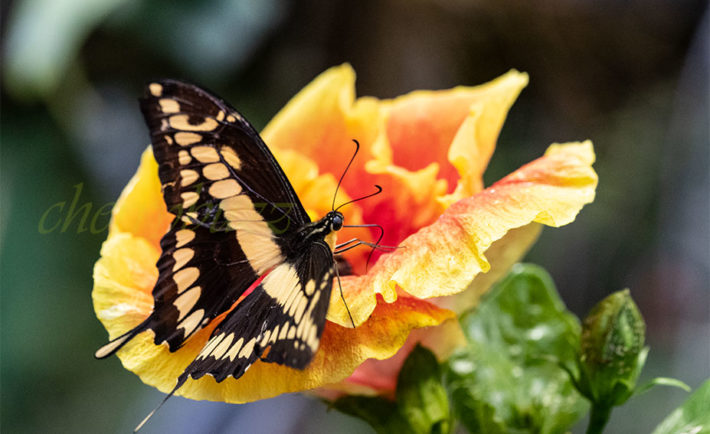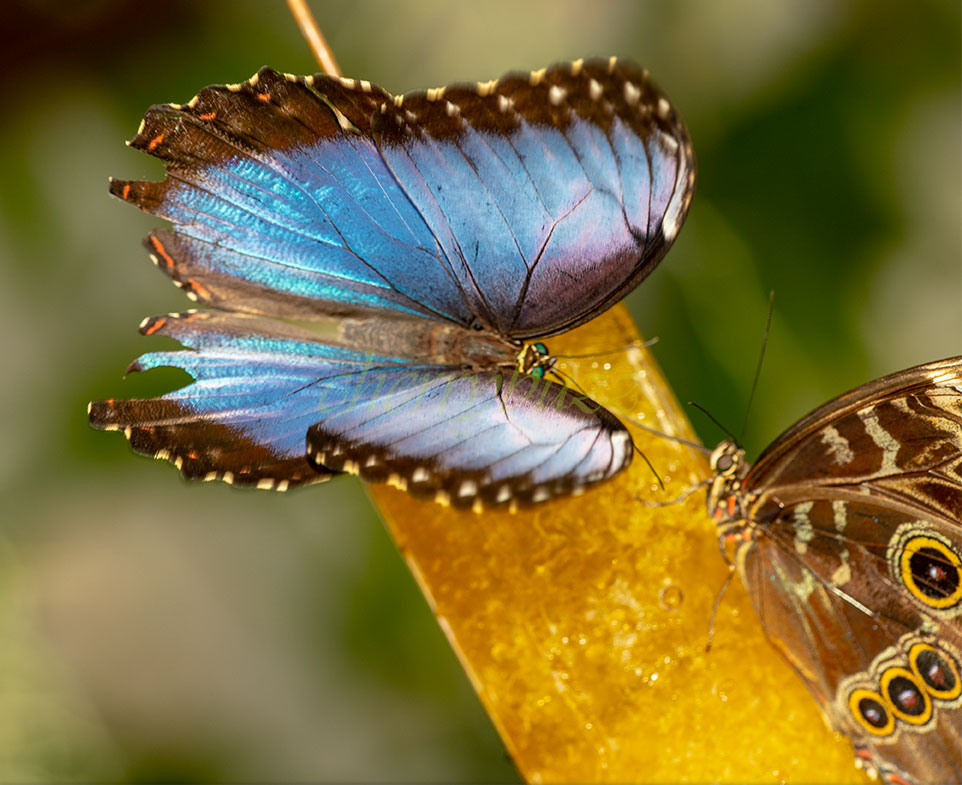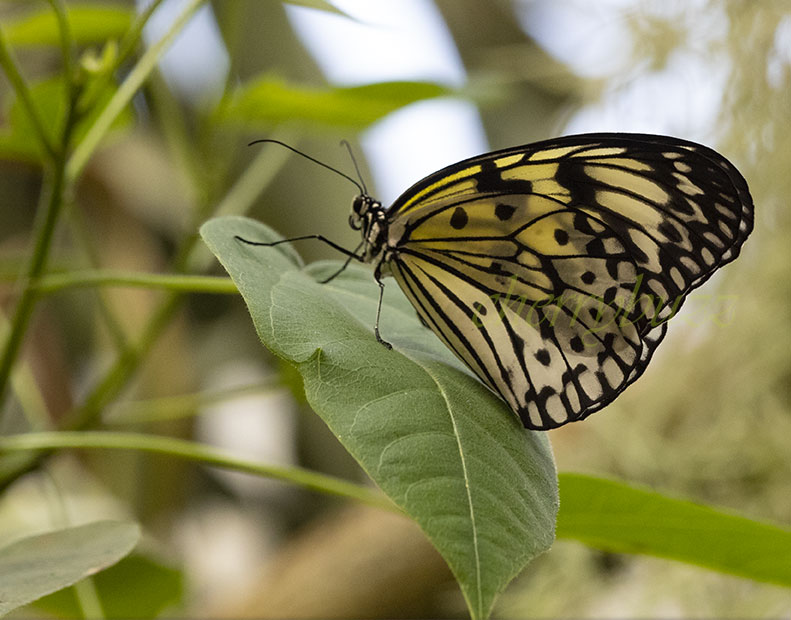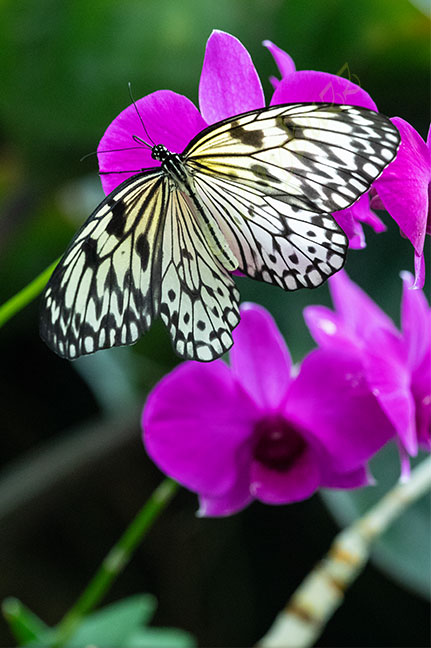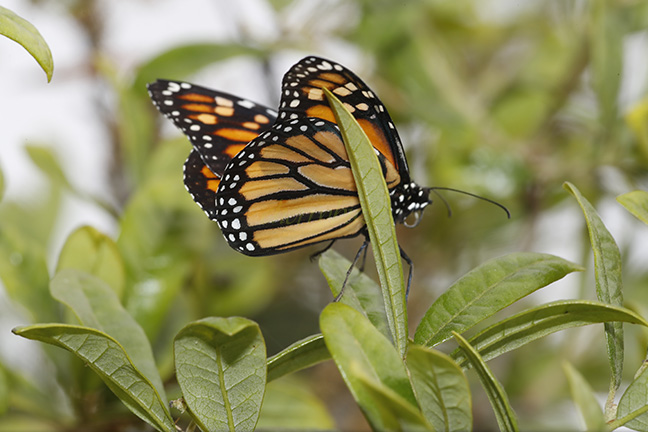 Butterflies are such stunningly beautiful and delicate creatures that they are sometimes used as a point of reference denoting beauty, colorfulness & the ephemeral. It is a less known fact to many butterfly lovers that some species of those delicate colorful winged creatures, the North American Monarch for example, actually migrate up to 4830 miles (7,778 km) to overwintering sites in Mexico!. Such migratory feats are rare in insects except perhaps for desert locusts (Schistocera gregaria) which have been on record (notably in 1950) as making the journey from the Arabian peninsula over 3,106 miles (5,000 km) to the west coast of Africa in seven weeks!. One tagged monarch in Lincoln, Nebraska, was recovered in Paulina, Iowa, after having covered 158 miles in 18 days!.
Butterflies are such stunningly beautiful and delicate creatures that they are sometimes used as a point of reference denoting beauty, colorfulness & the ephemeral. It is a less known fact to many butterfly lovers that some species of those delicate colorful winged creatures, the North American Monarch for example, actually migrate up to 4830 miles (7,778 km) to overwintering sites in Mexico!. Such migratory feats are rare in insects except perhaps for desert locusts (Schistocera gregaria) which have been on record (notably in 1950) as making the journey from the Arabian peninsula over 3,106 miles (5,000 km) to the west coast of Africa in seven weeks!. One tagged monarch in Lincoln, Nebraska, was recovered in Paulina, Iowa, after having covered 158 miles in 18 days!.
But apart from their beauty and delicateness, what is marvelous & intriguing about butterflies is the shimmering iridescence of the colors on their wings. The vibrant colors also change in intensity depending on the butterfly’s movement and the angle of viewing. This is because that shimmering color is not due to pigments but to tiny three-dimensional structures which cause the way light is reflected to change. Sarah Knapton, the Telegraph science correspondent, wrote about a scientific break-through which Professor Andrew Parker of the Natural Museum in London reported upon. The shimmering colors, said the Professor, ” are not caused by pigments or dyes but materials with a Nano-structure. And they last for a long time. We have dug up 49 million year old beetles and they are still the same color that they were when they died”. The article goes on to assert that Prof Parker & colleagues successfully cultured, in the Natural Museum Laboratory, an entire blue morpho butterfly forewing from cells dissected from the chrysalis.
The implications of discovering colors that never fade are enormous not only for the construction industry but for textile, the automobile & numerous other industries. Research might have gone on for years at a slow pace but one technological innovation gave scientists a mighty helping hand. This is the Crisper-Cas gene editing technique; it has enabled researchers to find out exactly what a gene does by deleting it & observing what happens or by giving it a twist & again observing the results. The great expense and elaborate steps of earlier gene editing procedures were prohibitive but Crisper is a fairly easy & relatively inexpensive tool empowering researchers in utterly new ways. Hence the leaps & bounds that research, in this area, has shown in recent years. Thus we see in a report in The Proceedings of National Academy of Sciences that two teams of biologists have used the technique to explore two master genes which control the ways in which butterfly wings appear to us. The master genes in question are those called optix & WntA. Research on these two master genes has not only rendered results for understanding butterfly wings but has also revealed that master genes that control the activity of other genes can evolve different roles in different species. The experiments & research continue with huge implications as well as hopes of finding answers to key questions in evolutionary biology.
As noted before, the economic & industrial implications of these researches are immense & wide-ranging. From an artist’s tool, as in the case of Kate Nichols, this gave rise to a scientific ambition to make Nano-structural materials that would give bright shimmering iridescent colors which not only do not fade but also are water resistant like butterfly wings. The next step was realized by a research group at Pennsylvania University. The research group succeeded, as far back as 3012, in making a new material which might also contribute in the future to energy-saving devices that automatically adjust the heaters and air conditioners inside smart buildings. On the outside of a building, such materials will not only provide bright, iridescent colors pleasurable to the eye but will also cancel the need for ever needing to re-paint the building or even clean it since structural colors also resist dirt, damp & mildew. It is pertinent to note that although the surface of structural materials or paints is rough, that roughness is not detected by the touch because the component structures are minuscule. The group was successful in giving their material the ridges necessary for structural color as well as the roughness necessary for water proofing; it only remains to make the processes less expensive & as that achievement has been made in 2012, future smart homes are now probably around the corner.Kate Nichols, an artist who has been using Nanoparticles in her paintings for years, traces the inception of her art back to her fascination with the blue-green iridescent hues of the Morpho butterfly. Because the color is not made of pigments but of structures which are smaller than a single wavelength of light, they “redirect and slow light waves down, causing them to interfere with each other in ways that depend on the shape, size, and spacing of the scattering structures, as well as on the angle of the incoming light and the position of the observer. In the case of the Morpho, these structures scatter blue light most strongly; its hue shimmers and shifts to lighter or darker blue as the butterfly moves, producing iridescence. Structural color is also at work in peacock feathers, fish scales, and beetle casing. Morpho butterflies and peacock feathers have also been behind the invention of new color printing techniques by researchers at the Technology University of Denmark. As this technology uses high resolution of 127,000 dots per inch, it can be used to print security patterns or watermarks on passports or bank notes which would make it impossible to counterfeit.
For more information, you may visit the following links:
https://en.wikipedia.org/wiki/Butterfly
http://www.pressreader.com/uk/the-daily-telegraph/20160827/281672549367295
https://www.nytimes.com/2017/09/18/science/butterfly-wing-color-patterns-gene-editing.html
https://www.katenicholsstudio.com/
https://gizmodo.com/this-artist-paints-with-nanoparticles-inspired-by-but-1746583925
http://blog.drupa.com/en/butterfly-wings-and-bird-feathers-inspire-new-color-printing-technique-2/
